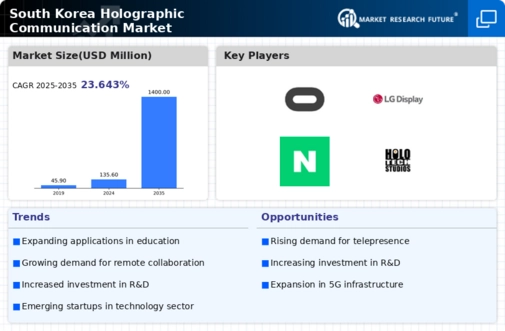The South Korea Holographic Communication Market is experiencing significant growth and intensifying competition as advancements in immersive technologies continue to reshape communication interfaces. This market, characterized by a blend of augmented reality, virtual reality, and holography, is increasingly attracting investment from major tech companies and startups alike. The competitive landscape is defined by a diverse range of players, each aiming to deliver innovative solutions that enhance user experiences across various sectors, such as education, healthcare, entertainment, and enterprise communication.
Companies are focused on differentiating themselves through proprietary technologies, strategic partnerships, and robust marketing initiatives that emphasize the practical applications of holographic communication.Oculus has established a strong foothold in the South Korean holographic communication landscape, leveraging its reputation in virtual reality to explore the possibilities of holography. The company is recognized for its cutting-edge headsets and immersive experiences that resonate well with avid gamers and tech enthusiasts in South Korea.
Oculus's strengths lie in its commitment to delivering high-quality products that blend user experience with compelling content. Its distribution channels and partnerships with major electronics retailers ensure a broad market presence, allowing easy access for consumers. Additionally, Oculus benefits from the backing of its parent company, which provides significant resources to enhance research and development, as well as marketing support tailored to South Korea's unique technological ecosystem.LG Display plays a pivotal role in the South Korea Holographic Communication Market, positioning itself as a leader in display technology critical for holographic applications.
The company is known for its advanced display panels, which are integral to the development of holographic communication systems.
LG Display focuses on producing innovative products such as OLED and flexible displays, catering to the demands of the evolving holographic landscape. Its strengths include a well-established manufacturing infrastructure and extensive R&D capabilities that drive innovation in display technologies. The company has also engaged in strategic collaborations and partnerships aimed at enhancing its market offering in South Korea. Mergers and acquisitions with other tech entities further strengthen LG Display's portfolio, allowing it to integrate new capabilities that support cutting-edge holographic solutions, thus solidifying its presence in the competitive environment of holographic communication.














